Old Concrete Septic Tanks
Are you experiencing issues with your old concrete septic tank? Signs of deterioration such as cracks and leaks can lead to costly repairs.
However, with proper maintenance, you can extend the lifespan of your septic tank and avoid these problems.
In this article, we will discuss the common issues faced by old concrete septic tanks, signs of deterioration to look out for, and the necessary steps to repair and upgrade them.
Additionally, we will provide guidance on the proper disposal of old concrete septic tanks. The old septic tank design has had its day
Common Issues With Old Concrete Septic Tanks
You need to be aware of the common issues that can arise with old concrete septic tanks. Signs of deterioration in these tanks include cracks, leaks, and corrosion. These issues can lead to structural damage, which can be costly to repair.
To prevent further damage to the tank, regular inspections and maintenance are necessary. Inspect the tank for any signs of cracks or leaks, and ensure that the tank is properly sealed. Additionally, avoid placing heavy objects or vehicles on top of the tank, as this can cause the concrete to crack.
If you notice any signs of deterioration, it's important to address them promptly to prevent further damage and to ensure the longevity of your septic tank.
Signs of Deterioration in Concrete Septic Tanks
You need to be aware of the signs of deterioration in your concrete septic tank to prevent potential issues.
One common sign is the presence of cracks in the tank, which can lead to leaks and structural damage.
Another indication is a strong sewage odor around the tank, indicating that there may be a leak or a problem with the ventilation system.
Lastly, the risk of a collapsed tank shouldn't be overlooked, as it can cause serious damage and contamination.
Cracks in Tank
If you notice multiple cracks in your concrete septic tank, it may be a sign of deterioration. Cracks in the tank can lead to leakage, which can contaminate the surrounding soil and groundwater.
To prevent further damage, it's important to address these cracks promptly. Repairing large cracks in a concrete septic tank requires specialized techniques and materials. It's recommended to consult a professional septic tank contractor who can assess the extent of the damage and perform the necessary repairs.
One common method for repairing large cracks is by sealing the tank surfaces using a high-quality, waterproof sealant. This helps to prevent water infiltration and prolong the lifespan of the tank.
Regular inspections and maintenance can help identify and address cracks in the tank before they worsen and cause significant issues.
Leaking Sewage Odor
When sewage odor permeates the air, it's a clear indication of a deteriorating concrete septic tank. Leaking sewage odor is a serious issue that shouldn't be ignored, as it can lead to significant health risks.
The odor is caused by leaks in the tank, which allow sewage to escape and release foul-smelling gases into the surrounding environment. Preventing leaks is crucial to maintain the functionality of the septic tank and to avoid the spread of harmful bacteria and pathogens.
Regular inspection and maintenance are essential to identify and repair any leaks promptly. It's also important to ensure that the tank is properly sealed and that all connections are secure. By taking these measures, you can prevent leaks and minimize the health risks associated with leaking sewage odor.
Collapsed Tank Risks
To prevent collapsed tank risks in old concrete septic tanks, it's important to regularly inspect and maintain the structural integrity of the tank, as well as address any signs of deterioration promptly. Collapsed tanks pose significant risks, including costly repairs and environmental hazards.
One of the signs of tank deterioration is visible cracks in the concrete. These cracks can allow groundwater to seep into the tank, causing the soil around it to become saturated and unstable.
Another sign to watch out for is settlement or sinking of the ground above the tank. This indicates that the tank's walls or bottom have weakened, putting it at risk of collapsing under the weight of the soil.
Regular maintenance, such as pumping out the tank and monitoring its condition, is crucial to prevent these risks and ensure a properly functioning septic system.
Maintaining and Extending the Lifespan of Old Concrete Septic Tanks
To ensure the longevity of your old concrete septic tank, regular maintenance and proper care are essential. By extending the lifespan and maintaining functionality of your tank, you can avoid costly repairs and ensure its efficient operation for years to come.
One crucial aspect of maintenance is regular pumping to remove accumulated solids and prevent clogs. This should typically be done every three to five years, depending on the tank size and household usage.
Additionally, inspecting the tank for signs of damage, such as cracks or leaks, is crucial. Regularly checking the tank's structural integrity allows for early detection and repair, preventing further deterioration.
By following these maintenance practices, you can significantly extend the lifespan of your old concrete septic tank and avoid potential issues in the future.
Speaking of repairs, let's now discuss how to address cracks and leaks in concrete septic tanks.
Repairing Cracks and Leaks in Concrete Septic Tanks
To prevent structural damage in your old concrete septic tank, it's crucial to address cracks and leaks promptly.
Hairline cracks may seem insignificant, but they can worsen over time and compromise the tank's integrity.
Preventing Structural Damage
Repairing cracks and leaks in your old concrete septic tank can help prevent further structural damage. To prevent damage and ensure the longevity of your tank, regular maintenance is crucial. Here are some maintenance tips to follow:
Inspect your septic tank regularly for any signs of cracks or leaks. This includes checking the walls, joints, and lid of the tank.
If you notice any cracks or leaks, repair them immediately. Use a high-quality concrete sealant to seal the cracks and prevent any further damage.
Avoid heavy machinery or vehicles driving over your septic tank, as this can cause structural damage. Install barriers or markers to protect the tank from accidental damage.
Pump your septic tank regularly to prevent the accumulation of sludge and solids, which can lead to tank failure and structural damage.
Repairing Hairline Cracks
If you notice any hairline cracks in your old concrete septic tank, you can easily repair them to prevent further damage. Hairline cracks are small, shallow cracks that can occur due to shrinkage or settling of the concrete over time.
While they may not seem like a big issue, they can lead to larger cracks and leaks if left unattended.
To repair hairline cracks, start by cleaning the area with a wire brush to remove any loose debris. Then, apply a concrete patching compound specifically designed for hairline cracks. Use a trowel to spread the compound evenly over the crack and smooth it out.
Allow the patch to dry thoroughly before testing for any leaks.
Upgrading Old Concrete Septic Tanks: Is It Necessary
You definitely should consider upgrading your old concrete septic tank to ensure its proper functioning. Upgrading options for old concrete septic tanks can greatly improve their performance and extend their lifespan. While concrete tanks are durable, they can deteriorate over time due to factors like corrosion, root intrusion, and ground movement. Old Septic tank Design has improved so it could be worth a look into today's options.
Upgrading your old concrete septic tank can involve various options such as installing a new liner, adding a riser, or even replacing the entire tank. These upgrades can address common issues like cracks, leaks, and inadequate capacity.
While the cost of upgrading your old concrete septic tank may vary depending on the specific upgrades required, it's often a cost-effective solution in the long run. By investing in upgrades, you can avoid costly repairs or potential failures in the future, ensuring the continued functionality of your septic system.
Proper Disposal of Old Concrete Septic Tanks
When disposing of old concrete septic tanks, it's important to follow proper guidelines to ensure safe and environmentally-friendly removal. Proper maintenance and disposal of these tanks is crucial to minimize the environmental impact.
First and foremost, it's recommended to seek professional assistance to handle the removal process. They've the expertise and equipment to safely handle the task.
Before disposal, the tank should be emptied and cleaned thoroughly to remove any residual waste.
Next, the tank should be broken down into smaller pieces for easier transportation.
It's essential to dispose of the concrete in an appropriate manner, such as recycling or landfilling, as per local regulations.
Frequently Asked Questions
How Much Does It Cost to Repair Cracks and Leaks in a Concrete Septic Tank?
Repairing cracks and leaks in a concrete septic tank can be costly. Professional repairs can range from $500 to $2,000. However, if you're handy, DIY repair techniques, such as using epoxy or patching materials, can save you money.
Can I Extend the Lifespan of My Old Concrete Septic Tank by Using Additives or Chemicals?
You can potentially extend the lifespan of your old concrete septic tank by using additives or chemicals. These substances can help improve the tank's performance and prevent deterioration, ensuring its longevity.
Are There Any Specific Signs of Deterioration in Concrete Septic Tanks That I Should Be Aware Of?
To ensure the longevity of your old concrete septic tank, it's crucial to be aware of signs of deterioration. Regular maintenance is of utmost importance. Look out for cracks, leaks, foul odors, and slow drainage.
What Are the Potential Consequences of Not Properly Maintaining an Old Concrete Septic Tank?
If you don't properly maintain an old concrete septic tank, you risk potential health hazards such as contamination of groundwater and surface water, as well as environmental impacts like the release of harmful pathogens and pollutants.
How Long Does a Typical Concrete Septic Tank Last Before It Needs to Be Replaced?
Typically, a concrete septic tank lasts around 30-40 years before replacement becomes necessary. However, proper maintenance is crucial in extending its lifespan. Regular pumping and inspections are of utmost importance to ensure optimal functionality.
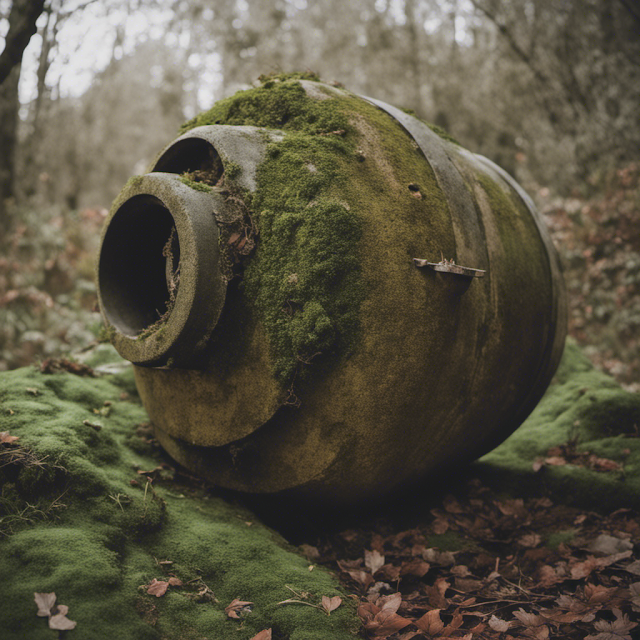
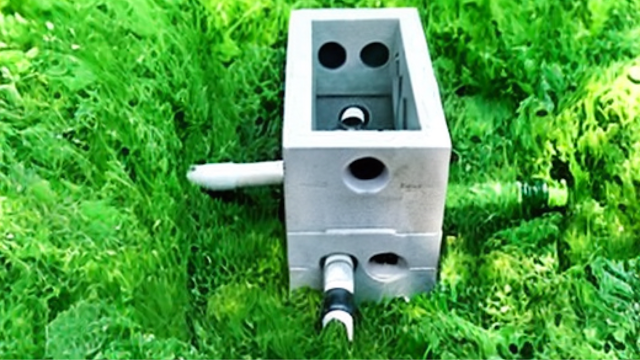

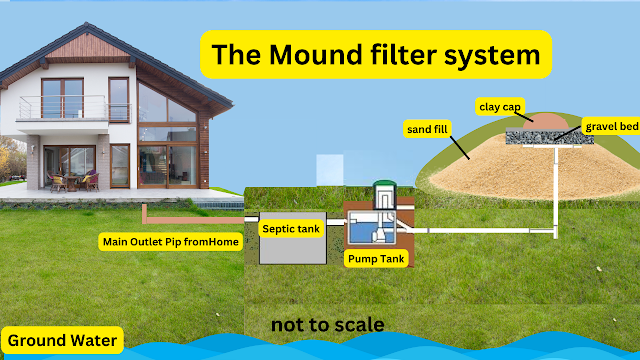
.png)

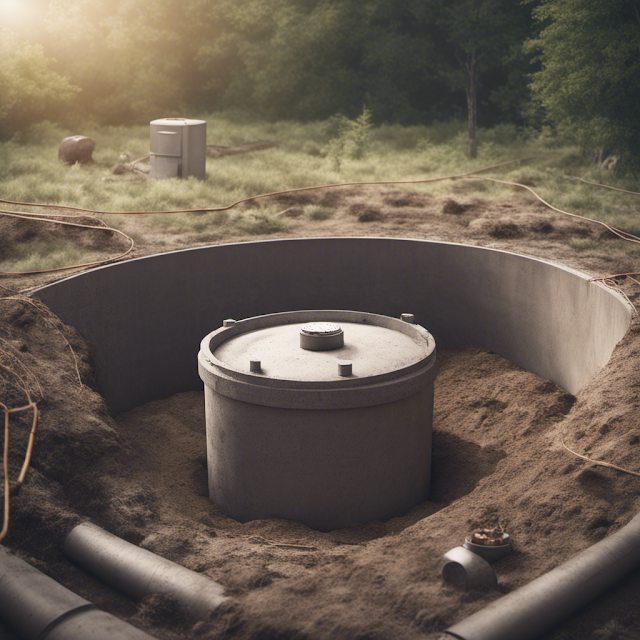
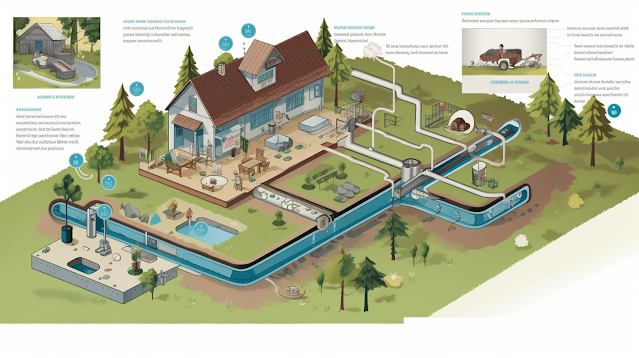
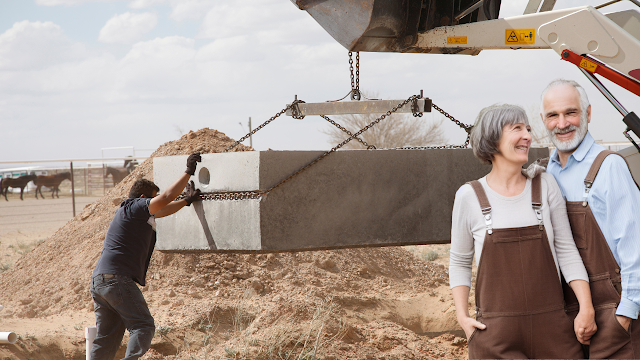


Comments
Post a Comment